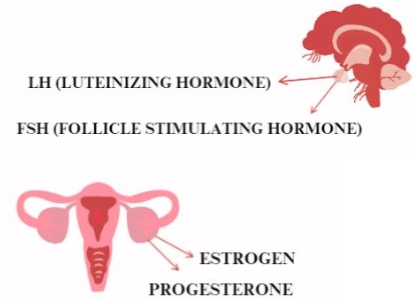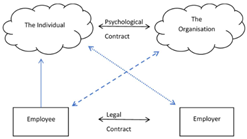The challenges of a stepfamily in Hong Kong Chinese culture
Abstract
The emphasis on nuclear family in Asia has often omitted experiences of remarried individuals, where aspects such as parent-child interaction and relationship have had specific implications for family well-being. This qualitative study interviewed 8 remarried parents and 11 social workers to explore the remarriage experiences in Hong Kong. The findings reveal four themes of Hong Kong remarried couples: 1) reasons for remarriage and factors hindering remarriage decision; 2) relationship with stepchildren become the biggest challenges in remarried relationships; 3) psychological and cultural factors contribute to negative stepparent-child relationship; and 4) the transition of remarriage--social service implementations. The findings extend perspectives around the contextualization of remarriage in the Hong Kong Chinese culture. The core values of family harmony, blood and family ties, plus societal stereotypes, are revisited with reference to the Chinese culture. It is recommended that social workers demonstrate more cultural sensitivity in their practices and offer different services to support blended families.
References
[1]Nippon Communications Foundation. Marriage Statistics in Japan: Average Age of Couples Continues to Rise. Available online: https://www.nippon.com/en/japan-data/h00759/ (accessed on 1 June 2023).
[2]Singapore Department of Statistics. Statistics on marriages and divorces, reference year 2018. Available online: https://www.singstat.gov.sg/-/media/files/publications/population/smd2017.pdf (accessed on 1 June 2023).
[3]Hong Kong Monthly Digest of Statistic. Marriage and Divorce Trends in Hong Kong, 1991 to 2020. Available online: https://www.censtatd.gov.hk/en/data/stat_report/product/FA100055/att/B72201FB2022XXXXB0100.pdf (accessed on 1 June 2023).
[4]Schmiege CJ, Richards LN, Zvonkovic AM. Remarriage. Journal of Divorce & Remarriage. 2001; 36(1): 123-140. doi: 10.1300/J087v36n01_07
[5]Ehrenberg MF, Robertson M, Pringle J. Attachment Style and Marital Commitment in the Context of Remarriage. Journal of Divorce & Remarriage. 2012; 53(3): 204-219. doi: 10.1080/10502556.2012.663270
[6]Matthijs K. Frequency, timing and intensity of remarriage in 19th century Flanders. The History of the Family. 2003; 8(1): 135-162. doi: 10.1016/S1081-602X(03)00010-1
[7]Schmidt A, van der Heijden M. Women Alone in Early Modern Dutch Towns. Journal of Urban History. 2015; 42(1): 21-38. doi: 10.1177/0096144215610771
[8]Watson WK, Bell NJ, Stelle C. Women narrate later life remarriage: Negotiating the cultural to create the personal. Journal of Aging Studies. 2010; 24(4): 302-312. doi: 10.1016/j.jaging.2010.07.002
[9]Pakot L, Őri P. Marriage systems and remarriage in 19th century Hungary: a comparative study. The History of the Family. 2012; 17(2): 105-124. doi: 10.1080/1081602x.2012.662016
[10]Chen M, Yip P. Remarriages and transnational marriages in Hong Kong: implications and challenges. Journal of Ethnic and Migration Studies. 2019; 46(14): 3059-3077. doi: 10.1080/1369183x.2019.1585026
[11]Jensen TM, Lippold MA. Patterns of stepfamily relationship quality and adolescents’ short-term and long-term adjustment. Journal of Family Psychology. 2018; 32(8): 1130-1141. doi: 10.1037/fam0000442
[12]Balachandran L, Jean Yeung WJ. Old Bonds, New Ties: Contextualizing Family Transitions in Re-partnerships, Remarriage and Stepfamilies in Asia. Journal of Family Issues. 2020; 41(7): 879-890. doi: 10.1177/0192513x20918428
[13]Papernow PL. Becoming A Stepfamily. Gestalt Press; 2015. doi: 10.4324/9781315798974
[14]Lau YK. Nonresidential Fathering and Nonresidential Mothering in a Chinese Context. The American Journal of Family Therapy. 2006; 34(4): 373-394. doi: 10.1080/01926180600553894
[15]Lau YK. Parent-Child Relationships, Parental Relationships and Children’s Self-Esteem in Post-Divorce Families in Hong Kong. Marriage and Family Review. 2007; 42(4): 87-103. doi: 10.1300/J002v42n04_05
[16]Lau YK. Facilitating Factors for Nonresident Parents’ Financial Provisions for Children in Hong Kong. Asia Pacific Journal of Social Work and Development. 2007; 17(2): 44-55. doi: 10.1080/21650993.2007.9756022
[17]Kurosu S. Remarriage in a stem family system in early modern Japan. Continuity and Change. 2007; 22(3): 429-458. doi: 10.1017/s026841600700642x
[18]Peng D. Personal resources, family factors, and remarriage: an analysis based on CFPS2010 data. The Journal of Chinese Sociology. 2016; 3(1). doi: 10.1186/s40711-015-0023-9
[19]Jin YJ. From tradition to modern. Law Press; 2010.
[20]Livingston G. Four-in-ten couples are saying “I do,” again. Available online: http://www.pewsocialtrends.org/2014/11/14/chapter-2-the-demographics-of-remarriage/ (accessed on 1 June 2023).
[21]Faber AJ, Wittenborn AK. The Role of Attachment in Children’s Adjustment to Divorce and Remarriage. Journal of Family Psychotherapy. 2010; 21(2): 89-104. doi: 10.1080/08975353.2010.483625
[22]Li Q. Mothers Left without a Man: Poverty and Single Parenthood in China. Social Inclusion. 2020; 8(2): 114-122. doi: 10.17645/si.v8i2.2678
[23]Ceglian C, Gardner S. Attachment style and the “wicked stepmother” spiral. Journal of Divorce and Remarriage. 2000; 34(1/2): 111-129. doi: 10.1300/J087v34n01_07
[24]Weaver SE, Coleman M. Caught in the middle: Mothers in stepfamilies. Journal of Social and Personal Relationships. 2010; 27(3): 305-326. doi: 10.1177/0265407510361729
[25]Blyaert L, Van Parys H, De Mol J, et al. Like a Parent and a Friend, but Not the Father: A Qualitative Study of Stepfathers’ Experiences in the Stepfamily. Australian and New Zealand Journal of Family Therapy. 2016; 37(1): 119-132. doi: 10.1002/anzf.1138
[26]Yang Y. Guanxilization or categorization: psychological mechanisms contributing to the formation of the Chinese concept of “us.” Social Sciences in China. 2009; 30(2): 49-67. doi: 10.1080/02529200902903800
[27]Yang MM. Gifts, Favors, and Banquets. Cornell University Press; 2016. doi: 10.7591/9781501713057
[28]To CW. The role of children in marital relationships and (in)stability of cross‐border stepfamilies in Hong Kong. Asia Pacific Viewpoint. 2020; 61(3): 406-422. doi: 10.1111/apv.12294
[29]Sullivan PL. Culture, divorce, and family mediation in Hong Kong. Family Court Review. 2005; 43(1): 109-123. doi: 10.1111/j.1744-1617.2005.00011.x
[30]Sullivan PL, Leung T, Lau YK, Dignam M. Changing laws, family beliefs and behavior: Implications for divorcing Chinese families. In: Proceedings of the Association of Family Court and Community Professionals 39th Annual Conference; 2002; Honolulu, HI.
[31]Lau YK. Non-resident parents’ participation in post-divorce co-parenthood in Hong Kong: Its determinants and impact on self-esteem [Phd thesis]. Chinese University of Hong Kong; 2001.
[32]Cohen L, Manion L, Morrison K. Research Methods in Education. Routledge; 2007. doi: 10.4324/9780203029053
[33]Attride-Stirling J. Thematic networks: an analytic tool for qualitative research. Qualitative Research. 2001; 1(3): 385-405. doi: 10.1177/146879410100100307
[34]Braun V, Clarke V. Using thematic analysis in psychology. Qualitative Research in Psychology. 2006; 3(2): 77-101. doi: 10.1191/1478088706qp063oa
[35]Birks M, Mills JE. Grounded theory. Sage Publication; 2011.
[36]Flick U. An Introduction to Qualitative Research, 4th ed. Sage; 2009.
[37]Gibbs GR. Analyzing Qualitative Data. Published online 2018. doi: 10.4135/9781526441867
[38]Pylyser C, Buysse A, Loeys T. Stepfamilies Doing Family: A Meta‐Ethnography. Family Process. 2017; 57(2): 496-509. doi: 10.1111/famp.12293
[39]Chow IHS, Ng I. The Characteristics of Chinese Personal Ties (Guanxi): Evidence from Hong Kong. Organization Studies. 2004; 25(7): 1075-1093. doi: 10.1177/0170840604045092
[40]Garneau CL, Adler-Baeder F, Higginbotham B. Validating the Remarriage Belief Inventory as a Dyadic Measure for Stepcouples. Journal of Family Issues. 2013; 37(1): 132-150. doi: 10.1177/0192513x13511954
Copyright (c) 2023 Yuen Han Mo, Tak Mau Simon Chan

This work is licensed under a Creative Commons Attribution 4.0 International License.









